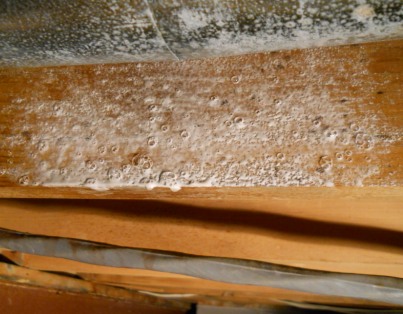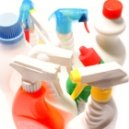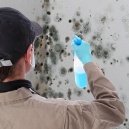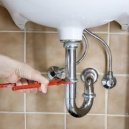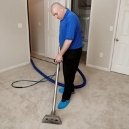Find a pre-screened local mold removal specialist Free Estimate
Find a Mold Specialist Now
Click or Call, Toll-Free 24/7
Mold and Mildew Remover
We are often asked about the best mold and mildew remover and the fact is, the answer depends on the material on which mildew and mold are growing. People often use the terms mold and mildew interchangeably, although the terms actually refer to two different types of fungi. They look very similar growing on a bathroom wall, however, and it doesn’t really matter which of the two is growing there when determining how to remove it. In fact, in many cases, both are found growing on the same surface.
Mold and Mildew Remover
Mildew and mold can be found in any area of the home. They are often found in bathrooms, on shower walls, in bathtubs, on tile floors, and behind toilets. Many bathroom cleansers are designed to remove mold and mildew from surfaces like these. A mixture of chlorine bleach and water will usually work, as well.
However, mold and mildew can grow on many other surfaces, including concrete walls and floors, drywall, wood, carpeting, in the insulation inside your walls, inside heating and air conditioning ducts, and other hard-to-access areas. It’s more difficult to remove mold and mildew from those surfaces.
You can purchase mold and mildew remover that contains antimicrobial ingredients at many home improvement stores. These products are often more effective than the typical bathroom cleanser or bleach and water. They still won’t completely remove mold or mildew from porous surfaces like drywall, carpeting, or insulation, however. Those materials usually need to be removed from the home and replaced with new, mold-free materials.
Removing Moldy or Mildewed Materials Safely
Removing moldy or mildewed materials must be done carefully because the process can spread mold to other areas of the home and it also exposes you to mold spores, which can cause health problems. Health problems linked to mold exposure range from respiratory problems like asthma, bronchitis, and pneumonia to things like rashes and hives, joint pain and inflammation, fatigue, and mental status changes. Mold remediation experts recommend sealing off your work area with heavy sheets of plastic and setting up negative pressure in the work area to prevent mold spores from spreading. Medical experts recommend using extensive protective gear, including N-95 respiratory masks, to protect yourself when dealing with the removal of any moldy materials.
For More Information
Because the process is complex and risky, if it’s something you’re considering handling on your own, you need more information than can be provided in a couple of articles online. For comprehensive step-by-step instructions, including safety guidelines, we recommend the ebook A Homeowner’s Complete Guide to Mold Remediation by mold remediation expert Brian Turner. Along with detailed easy-to-follow instructions, the book includes numerous photos to help you understand the complete process of mold remediation. For more information or to order your copy of A Homeowner’s Complete Guide to Mold Remediation, follow the link.
For Help Removing Mildew and Mold
If you’re not sure you’re up to the task of removing mold and mildew on your own (and if you have symptoms of mold-related health problems or pre-existing health problems like asthma or disorders of the immune system, you shouldn’t even try, as the increased exposure to mold is likely to worsen your symptoms significantly), you can schedule an appointment with a mold remediation professional. Most offer free consultations, and even if you end up deciding to do the work yourself, you can benefit from some free advice from an experienced professional. For instance, they can recommend the best mold and mildew remover to use for the job and point out any safety precautions you should take. To find qualified professionals offering free consultations in your area, follow the link.
Return From Mold And Mildew Remover To Our Main Mildew And Mold Page
Free Home Inspection By A Mold Removal Specialist
Search This Website
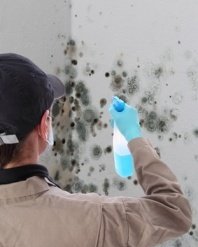
Some surfaces like drywall and insulation can't be cleaned and need to be replaced.
Recent Articles
-
See Our 5 Recommended Mold Removal Companies in Covington, KY
Apr 16, 25 12:59 PM
-
See Our 5 Recommended Mold Removal Companies in Wheaton, IL
Jun 20, 24 10:33 AM
-
See Our 5 Recommended Mold Removal Companies in Aberdeen, SD
Oct 08, 21 04:05 PM
